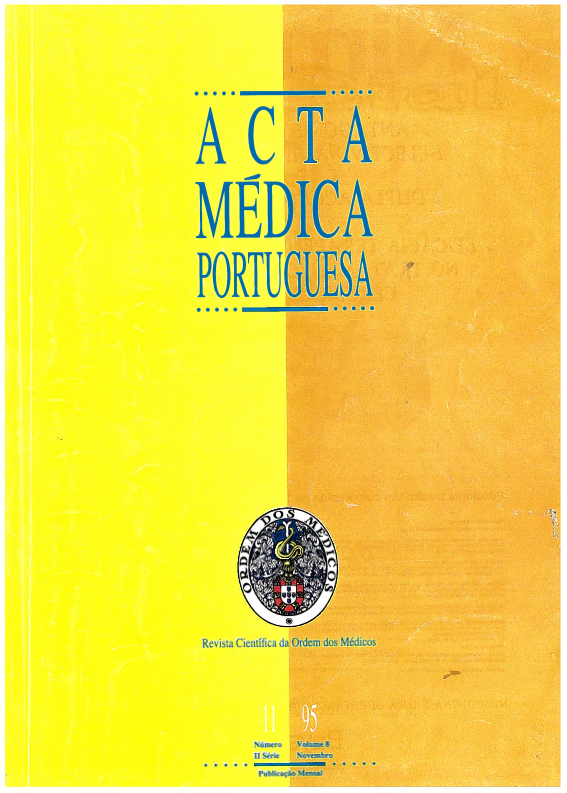Quality control of the micro-ELISA technic applied to the diagnosis of human and canine visceral leishmaniasis.
DOI:
https://doi.org/10.20344/amp.2762Abstract
Visceral leishmaniasis (VL) or kala-azar is, in Portugal, a zoonosis with the dog as reservoir. A quality control of the technique of micro-ELISA was carried out, using as reference the technique of IFI, the most commonly used for the diagnosis of this protozoosis, both for human and canine sera. Three different methods were used to estimate the cut-off point: X + 2sd (average for negative sera plus two standard deviation), P/N and J index. As quality parameteres were used sensitivity, specificity, efficacy and positive predictive value. The cut-off point for human sera was established at 0.100 A, with 100% sensitivity, 90.5% specificity, 95.3% efficacy and 91.4% positive predictive value, and for canine sera in 0.200 A, with 80.0% sensitivity, 94.3% specificity, 87.7% efficacy and 96.6% positive predictive value. Reproducibility was not fully satisfactory and two different ways of improving it are proposed: P/N and a correction factor. A statistically significant correlation was observed between micro-ELISA's absorbances and IFI titres regarding human sera, though it was not possible to do the same for dog sera.Downloads
Downloads
How to Cite
Issue
Section
License
All the articles published in the AMP are open access and comply with the requirements of funding agencies or academic institutions. The AMP is governed by the terms of the Creative Commons ‘Attribution – Non-Commercial Use - (CC-BY-NC)’ license, regarding the use by third parties.
It is the author’s responsibility to obtain approval for the reproduction of figures, tables, etc. from other publications.
Upon acceptance of an article for publication, the authors will be asked to complete the ICMJE “Copyright Liability and Copyright Sharing Statement “(http://www.actamedicaportuguesa.com/info/AMP-NormasPublicacao.pdf) and the “Declaration of Potential Conflicts of Interest” (http:// www.icmje.org/conflicts-of-interest). An e-mail will be sent to the corresponding author to acknowledge receipt of the manuscript.
After publication, the authors are authorised to make their articles available in repositories of their institutions of origin, as long as they always mention where they were published and according to the Creative Commons license.









